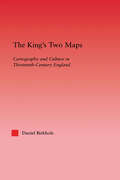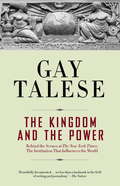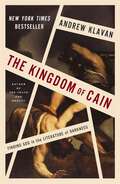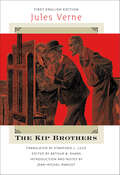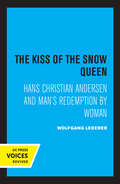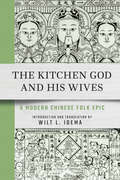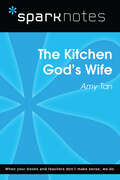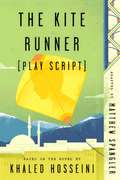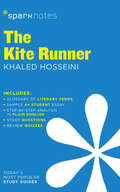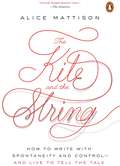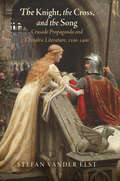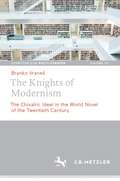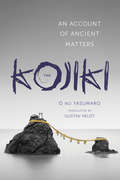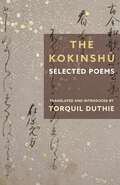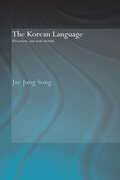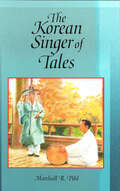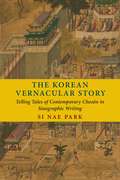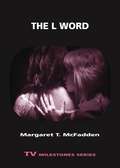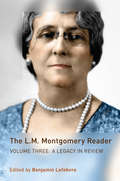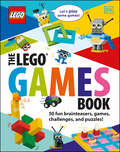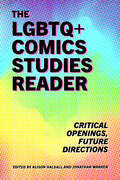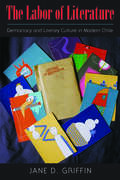- Table View
- List View
The King's Two Maps: Cartography & Culture in Thirteenth-Century England (Studies in Medieval History and Culture #Vol. 22)
by Daniel BirkholzWhile a culture may have a dominant way of "mapping," its geography is always plural, and there is always competition among conceptions of space. Beginning with this understanding, this book traces the map's early development into an emblem of the state, and charts the social and cultural implications of this phenomenon. This book chronicles the specific technologies, both material and epistemological, by which the map shows itself capable of accessing, organizing, and reorienting a tremendous range of information.
The Kingdom and the Power
by Gay TaleseThe classic inside story of The New York Times, the most prestigious, and perhaps the most powerful, of all American newspapers. Bestselling author Talese lays bare the secret internal intrigues behind the tradition of front page exposes in a story as gripping as a work of fiction and as immediate as today's headlines.From the Trade Paperback edition.
The Kingdom of Cain: Finding God in the Literature of Darkness
by Andrew KlavanINSTANT NEW YORK TIMES BESTSELLER <br> Andrew Klavan explores how artists' imaginative engagement with the darkness can point the way to living beautifully in the midst of a tragic world. <br> "Andrew Klavan's book illuminates even as it explores the deepest darkness, finding truth and beauty in art born of unflinching confrontations with evil." --Daniel McCarthy, editor-in-chief, Modern Age <p> In his USA Today bestselling The Truth and Beauty, Andrew Klavan explored how the work of great poets helps illuminate the truth of the gospels. Now, the award-winning screenwriter and crime novelist turns his attention to the dark side of human nature to discover how we might find joy and beauty in the world while still being clear-eyed about the evil found in it. <p> The Kingdom of Cain looks at three murders in history--including the first murder, Cain's killing of his brother, Abel--and at the art created from imaginative engagement with those horrific events by artists ranging from Fyodor Dostoevsky to Alfred Hitchcock. To make beauty out of the world as it is--shot through with evil and injustice and suffering--is the task not just of the artist but, Klavan argues, of every life rightly lived. <p> Examining how that transformation occurs in art grants us a vision for how it can happen in our lives. Klavan eloquently argues that it is possible to be clear-eyed about the evil in the world while remaining hope-filled about God's ability to redeem it all. <b>New York Times Bestseller</b>
The Kip Brothers (Early Classics of Science Fiction)
by Jules VerneCastaways on a barren island in the South Seas, Karl and Pieter Kip are rescued by the brig James Cook. After helping to quell an onboard mutiny, however, they suddenly find themselves accused and convicted of the captain's murder. In this story, one of his last Voyages Extraordinaires, Verne interweaves an exciting exploration of the South Pacific with a tale of judicial error reminiscent of the infamous Dreyfus Affair. This Wesleyan edition brings together the first English translation with one of the first detailed critical analyses of the novel, and features all the illustrations from the original 1902 publication.
The Kiss
by Kathryn HarrisonHere comes a true story about A Woman Who Slept with Her Father--prime fodder for the TV talk show feeding frenzy. Certainly it would be easy to lump Kathryn Harrison's new memoir, The Kiss into this same category of titillating topics, but that would be a mistake. There is nothing remotely titillating about Harrison's book; instead, it reads like a slow descent into hell--one that compels and repels in almost equal measure at times. Harrison, who did not really meet her father until she was 20, takes the reader on a difficult journey into her loveless childhood, her bouts with anorexia and bulimia, and, eventually, the incestuous 4-year affair with her father. Her prose is deceptively simple; her choice of present tense to describe events that occurred many years ago forces an immediacy--almost a complicity--upon the reader that heightens both revulsion and compassion. The Kiss is not for everybody. Some readers will be outraged by its subject matter; others will find it just too painful to read. But for those who make it through, this harrowing tale promises the reward of a life reclaimed and a tragedy transcended.
The Kiss of the Snow Queen: Hans Christian Andersen and Man's Redemption by Woman
by Wolfgang LedererThis title is part of UC Press's Voices Revived program, which commemorates University of California Press’s mission to seek out and cultivate the brightest minds and give them voice, reach, and impact. Drawing on a backlist dating to 1893, Voices Revived makes high-quality, peer-reviewed scholarship accessible once again using print-on-demand technology. This title was originally published in 1986.
The Kitchen God and His Wives: A Modern Chinese Folk Epic
by Wilt L. IdemaThe Kitchen God and His Wives is a modern folk epic on the origin of the Stove God, widely venerated across China. In this tale, the Stove God (or Kitchen God) begins as a mortal man who owes his wealth and success to his loyal wife, the long-suffering Guo Dingxiang. Guo's ungrateful husband divorces her, losing his fortune and eventually becoming a beggar. When he receives charity from his former wife, he is filled with remorse and kills himself by jumping into the stove. This act elevates both the man and his wife to godhood. Set in China's countryside and ranging from heaven to hell, this tale provides a look at traditional marriage customs and the uses and abuses of fortune telling in southeastern Henan. This volume contains Wilt L. Idema's full and annotated translation of the Guo Dingxiang epic together with an extensive study of the textualization of this work in the years following the Cultural Revolution. The Kitchen God and His Wives offers a valuable look at Chinese folk culture and traditional storytelling.
The Kitchen God's Wife (SparkNotes Literature Guide Series)
by SparkNotesThe Kitchen God's Wife (SparkNotes Literature Guide) by Amy Tan Making the reading experience fun! Created by Harvard students for students everywhere, SparkNotes is a new breed of study guide: smarter, better, faster. Geared to what today's students need to know, SparkNotes provides: *Chapter-by-chapter analysis *Explanations of key themes, motifs, and symbols *A review quiz and essay topicsLively and accessible, these guides are perfect for late-night studying and writing papers
The Kite Runner (Play Script): Based on the novel by Khaled Hosseini
by Matthew SpanglerThe script for the stage production of Khaled Hosseini's first and internationally bestselling novel, The Kite Runner, as adapted by playwright Matthew Spangler. The unforgettable, heartbreaking story of the unlikely friendship between a wealthy boy and the son of his father's servant, The Kite Runner is a beautifully crafted novel set in a country that is in the process of being destroyed. Now adapted for the stage, the story is about the power of reading, the price of betrayal, and the possibility of redemption, and is an exploration of the influence of fathers over sons--their love, their sacrifices, their lies.A sweeping saga of family, love, and friendship told against the devastating backdrop of the history of Afghanistan over the last thirty years, The Kite Runner is an unusual and powerful story that has become a beloved, one-of-a-kind classic.This adaptation was first performed at Wyndham's Theatre, London, in December 2016.
The Kite Runner (SparkNotes Literature Guide Series #40)
by SparkNotesThe Kite Runner (SparkNotes Literature Guide) by Khaled Hosseini Making the reading experience fun! When a paper is due, and dreaded exams loom, here's the lit-crit help students need to succeed! SparkNotes Literature Guides make studying smarter, better, and faster. They provide chapter-by-chapter analysis; explanations of key themes, motifs, and symbols; a review quiz; and essay topics. Lively and accessible, SparkNotes is perfect for late-night studying and paper writing. Includes:An A+ Essay—an actual literary essay written about the Spark-ed book—to show students how a paper should be written.16 pages devoted to writing a literary essay including: a glossary of literary termsStep-by-step tutoring on how to write a literary essayA feature on how not to plagiarize
The Kite and the String: How to Write with Spontaneity and Control--and Live to Tell the Tale
by Alice MattisonA targeted and insightful guide to the stages of writing fiction and memoir without falling into common traps, while wisely navigating the writing life, from an award-winning author and longtime teacherWriting well does not result from following rules and instructions, but from a blend of spontaneity, judgment, and a wise attitude toward the work--neither despairing nor defensive, but clear-eyed, courageous, and discerning. Writers must learn to tolerate the early stages, the dreamlike and irrational states of mind, and then to move from jottings and ideas to a messy first draft, and onward into the work of revision. Understanding these stages is key.The Kite and the String urges writers to let playfulness and spontaneity breathe life into the work--letting the kite move with the winds of feeling--while still holding on to the string that will keep it from flying away. Alice Mattison attends also to the difficulties of protecting writing time, preserving solitude, finding trusted readers, and setting the right goals for publication. The only writing guide that takes up both the stages of creative work and developing effective attitudes while progressing through them, plus strategies for learning more about the craft, The Kite and the String responds to a pressing need for writing guidance at all levels.
The Knight, the Cross, and the Song: Crusade Propaganda and Chivalric Literature, 1100-1400 (The Middle Ages Series)
by Stefan Vander ElstThe Knight, the Cross, and the Song offers a new perspective on the driving forces of crusading in the period 1100-1400. Although religious devotion has long been identified as the primary motivation of those who took the cross, Stefan Vander Elst argues that it was by no means the only focus of the texts written to convince the warriors of Western Christianity to participate in the holy war. Vander Elst examines how, across three centuries, historiographical works that served as exhortations for the Crusade sought specifically to appeal to aristocratic interests beyond piety. They did so by appropriating the formal and thematic characteristics of literary genres favored by the knightly class, the chansons de geste and chivalric romance. By using the structure, commonplaces, and traditions of chivalric literature, propagandists associated the Crusade with the decidedly secular matters to which arms-bearers were drawn. This allowed them to introduce the mutual obligation between lord and vassal, family honor, the thirst for adventure, and even the desire for women as parallel and complementary motivations for Crusade, making chivalric and literary concerns an indelible part of the ideology and practice of holy war.Examining English, Latin, French, and German texts, ranging from the twelfth-century Gesta Francorum and Chanson d'Antioche to the fourteenth-century Krônike von Prûzinlant and La Prise d'Alixandre, The Knight, the Cross, and the Song traces the historical development and geographical spread of this innovative use of secular chivalric fiction both to shape the memory and interpretation of past events and to ensure the continuation of the holy war.
The Knights of Modernism: The Chivalric Ideal in the World Novel of the 20th Century (Schriften zur Weltliteratur/Studies on World Literature #12)
by Branko VranešAccording to the customary literary-historical and theoretical notion, the fact that the first modern novel represents a parody or travesty of the chivalric ideal merits no particular attention. Failing to become attuned to the real role of the chivalric ideal at the beginning of the era of the modern novel, commentators missed the chance to adequately review the role of chivalry at the end of that period. The modern novel did not only begin, but also ended with a travesty of the chivalric ideal. The deep need of a significant number of modernist writers to measure their own time according to the ideals of the high and late Middle Ages cannot, therefore, be explained by a set of literary-historical, spiritual-historical or social circumstances. The predilection of a range of twentieth century novelists for a distant feudal past suggests that there exists a fundamental poetic connection between the modern (or at least the modernist) novel and the ideals of chivalry.
The Kojiki
by Gustav HeldtChronicles the mythical origins of Japan's islands and their ruling dynasty through a diverse array of genealogies, tales, and songs
The Kokinshū: Selected Poems (Translations from the Asian Classics)
by Torquil DuthieCompiled in the early tenth century, the Kokinshū is an anthology of some eleven hundred poems that aimed to elevate the prestige of vernacular Japanese poetry at the imperial court. From shortly after its completion to the end of the nineteenth century, it was celebrated as the cornerstone of the Japanese vernacular poetic tradition. The composition of classical poetry, other later poetic forms such as linked verse and haikai, and vernacular Japanese literary writing in its entirety (including classic works such as Murasaki Shikibu’s Tale of Genji and Sei Shōnagon’s Pillow Book) all draw from the Kokinshū.This book offers an inviting and immersive selection of roughly one-third of the anthology in English translation. Torquil Duthie focuses on rendering the poetic language of the Kokinshū as a whole, in such a way that readers can understand and experience how its poems work together to create a literary world. He emphasizes that classical Japanese poems do not stand alone as self-contained artifacts but take part in an ongoing intertextual conversation. Duthie provides translations and interpretations of the two prefaces to the Kokinshū, which deeply influenced Japanese literary aesthetics. The book also includes critical essays on various aspects of the anthology and its history. This translation helps specialist and nonspecialist readers alike appreciate the beauty and richness of the Kokinshū, as well as its significance for the Japanese literary tradition.
The Korean Language: Structure, Use and Context
by Jae Jung SongSuitable for students of all levels, this book provides a general description of the Korean language by highlighting important structural aspects whilst keeping technical details to a minimum. By examining the Korean language in its geographical, historical, social and cultural context the reader is able to gain a good understanding of its speakers and the environment in which it is used. The book covers a range of topics on Korean including its genetic affiliation, historical development, sound patterns, writing systems, vocabulary, grammar and discourse. The text is designed to be accessible, primarily to English-speaking learners of Korean and scholars working in disciplines other than linguistics, as well as serving as a useful introduction for general linguists. The book complements Korean language textbooks used in the classroom and will be welcomed not only by readers with a wider interest in Korean studies, but also by Asian specialists in general.
The Korean Singer of Tales (Harvard-Yenching Institute Monograph Series #37)
by Marshall R. PihlP'ansori, the traditional oral narrative of Korea, is sung by a highly trained soloist to the accompaniment of complex drumming. The singer both narrates the story and dramatizes all the characters, male and female. Performances require as long as six hours and make extraordinary vocal demands. In the first book-length treatment in English of this remarkable art form, Pihl traces the history of p'ansori from its roots in shamanism and folktales through its nineteenth-century heyday under highly acclaimed masters and discusses its evolution in the twentieth century. After examining the place of p'ansori in popular entertainment and its textual tradition, he analyzes the nature of texts in the repertoire and explains the vocal and rhythmic techniques required to perform them.Pihl's superb translation of the alternately touching and comic "Song of Shim Ch'ong"—the first annotated English translation of a full p'ansori performance text—illustrates the emotional range, narrative variety, and technical complexity of p'ansori literature. The Korean Singer of Tales will interest not only Korean specialists, but also students of comparative literature, folklore, anthropology, and music.
The Korean Vernacular Story: Telling Tales of Contemporary Chosŏn in Sinographic Writing
by Si Nae ParkAs the political, economic, and cultural center of Chosŏn Korea, eighteenth-century Seoul epitomized a society in flux: It was a bustling, worldly metropolis into which things and people from all over the country flowed. In this book, Si Nae Park examines how the culture of Chosŏn Seoul gave rise to a new vernacular narrative form that was evocative of the spoken and written Korean language of the time.The vernacular story (yadam) flourished in the nineteenth century as anonymously and unofficially circulating tales by and for Chosŏn people. The Korean Vernacular Story focuses on the formative role that the collection Repeatedly Recited Stories of the East (Tongp’ae naksong) played in shaping yadam, analyzing the collection’s language and composition and tracing its reception and circulation. Park situates its compiler, No Myŏnghŭm, in Seoul’s cultural scene, examining how he developed a sense of belonging in the course of transforming from a poor provincial scholar to an urbane literary figure. No wrote his tales to serve as stories of contemporary Chosŏn society and chose to write not in cosmopolitan Literary Sinitic but instead in a new medium in which Literary Sinitic is hybridized with the vernacular realities of Chosŏn society. Park contends that this linguistic innovation to represent tales of contemporary Chosŏn inspired readers not only to circulate No’s works but also to emulate and cannibalize his stylistic experimentation within Chosŏn’s manuscript-heavy culture of texts.The first book in English on the origins of yadam, The Korean Vernacular Story combines historical insight, textual studies, and the history of the book. By highlighting the role of negotiation with Literary Sinitic and sinographic writing, it challenges the script (han’gŭl)-focused understanding of Korean language and literature.
The L Word
by Margaret T. McfaddenIn January 2004, Showtime debuted The L Word, the first prime-time commercial drama to center around lesbian characters. Over the course of six seasons, the show depicted the lives and loves of an evolving circle of friends in West Hollywood, California, and was widely read as evidence of changing social attitudes toward gay people. Building on immediate critical attention, the show reigned as Showtime's most popular for its first three seasons and earned a large and enthusiastic audience. In The L Word, author Margaret T. McFadden argues that the show is important for its subject matter, its extended and deeply literate commentary on the history of representation of lesbians in popular media, and the formal innovations it deployed to rewrite that history. McFadden shows that the program's creators, led by executive producer Ilene Chaiken, were well aware of the assumptions and expectations that viewers would bring to it after a history of stereotypical depictions of lesbians on television. They sought to satisfy a diverse group of viewers who wanted honest and appealing portrayals of their lives while still attracting a large enough mainstream audience to make The L Word commercially viable. In five chapters, McFadden explores how the show tackled these problems of representation by using reflexivity as a strategy to make meaning, undertaking a complicitous critique of Hollywood, skillfully using a soap-drama format to draw in its audience, and ultimately creating its own complex representation of a lesbian community. While deconstructing the history of misrepresentation of lesbians, The L Word's new modes of storytelling and new perspectives made many aspects of lesbian experience, history, and culture visible to a large audience. Fans of the show as well as readers interested in cultural studies and gay and lesbian pop cultural history will enjoy this astute volume.
The L.M. Montgomery Reader
by Benjamin LefebvreThe L.M. Montgomery Reader assembles significant rediscovered primary material on one of Canada's most enduringly popular authors throughout her high-profile career and after her death. Each of its three volumes gathers pieces published all over the world to set the stage for a much-needed reassessment of Montgomery's literary reputation. Much of the material is freshly unearthed from archives and digital collections and has never before been published in book form.The selections appearing in this first volume focus on Montgomery's role as a public celebrity and author of the resoundingly successful Anne of Green Gables (1908). They give a strong impression of her as a writer and cultural critic as she discusses a range of topics with wit, wisdom, and humour, including the natural landscape of Prince Edward Island, her wide readership, anxieties about modernity, and the continued relevance of "old ideals." These essays and interviews, joined by a number of additional pieces that discuss her work's literary and cultural value in relation to an emerging canon of Canadian literature, make up nearly one hundred selections in all.Each volume is accompanied by an extensive introduction and detailed commentary by leading Montgomery scholar Benjamin Lefebvre that trace the interplay between the author and the critic, as well as between the private and the public Montgomery. This volume - and the Reader as a whole - adds tremendously to our understanding and appreciation of Montgomery's legacy as a Canadian author and as a literary celebrity both during and beyond her lifetime.
The L.M. Montgomery Reader: Volume Three
by Benjamin LefebvreThe final volume of The L.M. Montgomery Reader, A Legacy in Review examines a long overlooked portion of Montgomery's critical reception: reviews of her books. Although Montgomery downplayed the impact that reviews had on her writing career, claiming to be amused and tolerant of reviewers' contradictory opinions about her work, she nevertheless cared enough to keep a large percentage of them in scrapbooks as an archive of her career.Edited by leading Montgomery scholar Benjamin Lefebvre, this volume presents more than four hundred reviews from eight countries that raise questions about and offer reflections on gender, genre, setting, character, audience, and nationalism, much of which anticipated the scholarship that has thrived in the last four decades. Lefebvre's extended introduction and chapter headnotes place the reviews in the context of Montgomery's literary career and trace the evolution of attitudes to her work, and his epilogue examines the reception of Montgomery's books that were published posthumously.A comprehensive account of the reception of Montgomery's books, published during and after her lifetime, A Legacy in Review is the illuminating final volume of this important new resource for L.M. Montgomery scholars and fans around the world.
The LEGO Games Book: 50 Fun Brainteasers, Games, Challenges, and Puzzles!
by Tori KosaraBuild in some time for fun!Who can stack the tallest tower in 60 seconds? Can anyone solve the puzzle cube? With more than 50 fun challenges, puzzles, brainteasers, and games, get out your LEGO® bricks and put your friends and family to the test.©2020 The LEGO Group.
The LGBTQ+ Comics Studies Reader: Critical Openings, Future Directions
by Alison Halsall and Jonathan WarrenWinner of the 2023 Eisner Award for Best Academic/Scholarly WorkContributions by Michelle Ann Abate, William S. Armour, Alison Bechdel, Jennifer Camper, Tesla Cariani, Matthew Cheney, Hillary Chute, Edmond (Edo) Ernest dit Alban, Ramzi Fawaz, Margaret Galvan, Justin Hall, Alison Halsall, Lara Hedberg, Susanne Hochreiter, Sheena C. Howard, Rebecca Hutton, remus jackson, Keiko Miyajima, Chinmay Murali, Marina Rauchenbacher, Katharina Serles, Sathyaraj Venkatesan, Jonathan Warren, and Lin YoungThe LGBTQ+ Comics Studies Reader explores the exemplary trove of LGBTQ+ comics that coalesced in the underground and alternative comix scenes of the mid-1960s and in the decades after. Through insightful essays and interviews with leading comics figures, volume contributors illuminate the critical opportunities, current interactions, and future directions of these comics. This heavily illustrated volume engages with the work of preeminent artists across the globe, such as Howard Cruse, Edie Fake, Justin Hall, Jennifer Camper, and Alison Bechdel, whose iconic artwork is reproduced within the volume. Further, it addresses and questions the possibilities of LGBTQ+ comics from various scholarly positions and multiple geographical vantages, covering a range of queer lived experience. Along the way, certain LGBTQ+ touchstones emerge organically and inevitably—pride, coming out, chosen families, sexual health, gender, risk, and liberation. Featuring comics figures across the gamut of the industry, from renowned scholars to emerging creators and webcomics artists, the reader explores a range of approaches to LGBTQ+ comics—queer history, gender and sexuality theory, memory studies, graphic medicine, genre studies, biography, and more—and speaks to the diversity of publishing forms and media that shape queer comics and their reading communities. Chapters trace the connections of LGBTQ+ comics from the panel, strip, comic book, graphic novel, anthology, and graphic memoir to their queer readership, the LGBTQ+ history they make visible, the often still quite fragile LGBTQ+ distribution networks, the coded queer intelligence they deploy, and the community-sustaining energy and optimism they conjure. Above all, The LGBTQ+ Comics Studies Reader highlights the efficacy of LGBTQ+ comics as a kind of common ground for creators and readers.
The Labor of Literature: Democracy and Literary Culture in Modern Chile
by Jane D. GriffinBy producing literature in nontraditional forms—books made of cardboard trash, posters in subway stations, miniature shopping bags, digital publications, and even children’s toys—Chileans have made and circulated literary objects in defiance of state censorship and independent of capitalist definitions of value. In The Labor of Literature Jane D. Griffin studies amateur and noncommercial forms of literary production in Chile that originated in response to authoritarian state politics and have gained momentum throughout the postdictatorship period. She argues that such forms advance a model of cultural democracy that differs from and sometimes contradicts the model endorsed by the state and the market. By examining alternative literary publications, Griffin recasts the seventeen-year Pinochet dictatorship as a time of editorial experimentation despite widespread cultural oppression and shows how grassroots cultural activism has challenged government-approved corporate publishing models throughout the postdictatorship period. Griffin’s work also points to the growing importance of autogestión, or do-it-yourself cultural production, where individuals combine artisanal forms with new technologies to make and share creative work on a global scale.
The Labors of Modernism: Domesticity, Servants, and Authorship in Modernist Fiction
by Mary WilsonIn The Labors of Modernism, Mary Wilson analyzes the unrecognized role of domestic servants in the experimental forms and narratives of Modernist fiction by Virginia Woolf, Gertrude Stein, Nella Larsen, and Jean Rhys. Examining issues of class, gender, and race in a transatlantic Modernist context, Wilson brings attention to the place where servants enter literature: the threshold. In tracking their movements across the architectural borders separating indoors and outdoors and across the physical doorways between rooms, Wilson illuminates the ways in which the servants who open doors symbolize larger social limits and exclusions, as well as states of consciousness. The relationship between female servants and their female employers is of particular importance in the work of female authors, for whom the home and the novel are especially interconnected sites of authorization and domestication. Modernist fiction, Wilson shows, uses domestic service to tame and interrogate not only issues of class, but also the overlapping distinctions of racial and ethnic identities. As Woolf, Stein, Larsen, and Rhys use the novel to interrogate the limitations of gendered domestic ideologies, they find they must deploy these same ideologies to manage the servant characters whose labor maintains the domestic spaces they find limiting. Thus the position of servants in these texts forces the reader to recognize servants not just as characters, but as conditions for the production of literature and of the homes in which literature is created.
